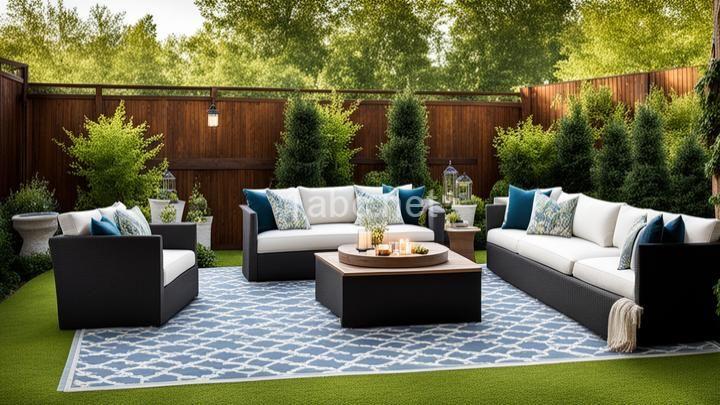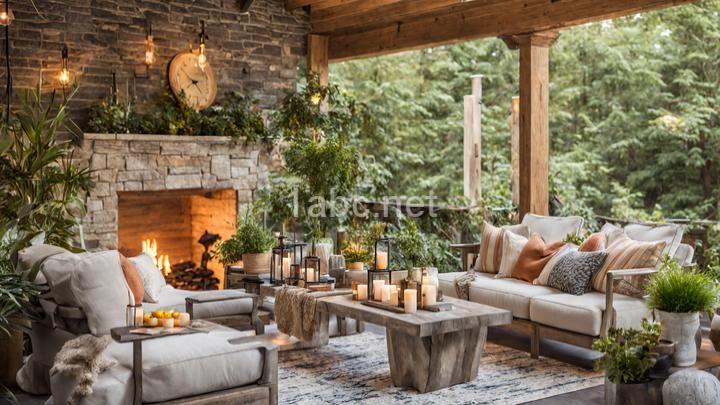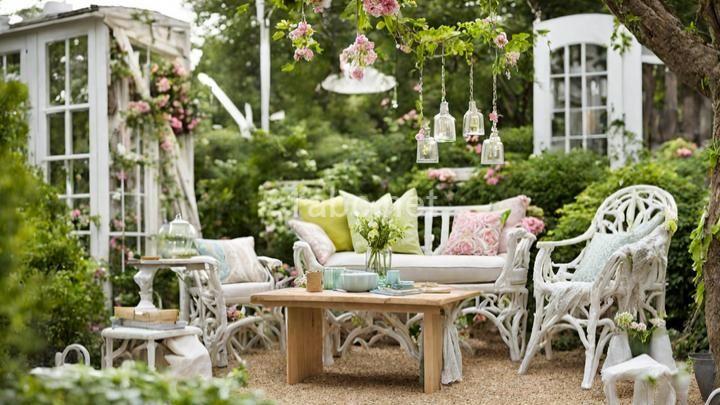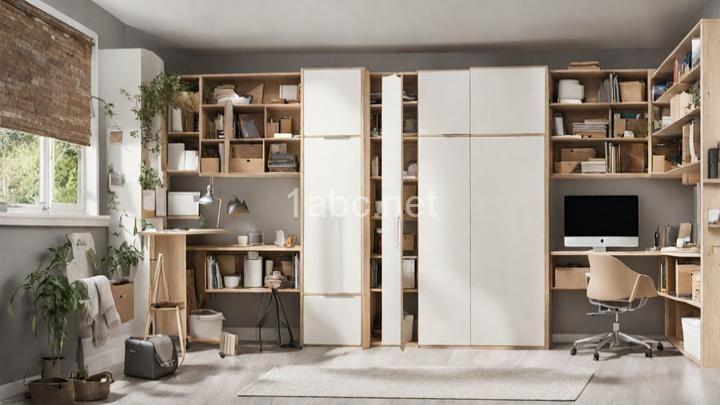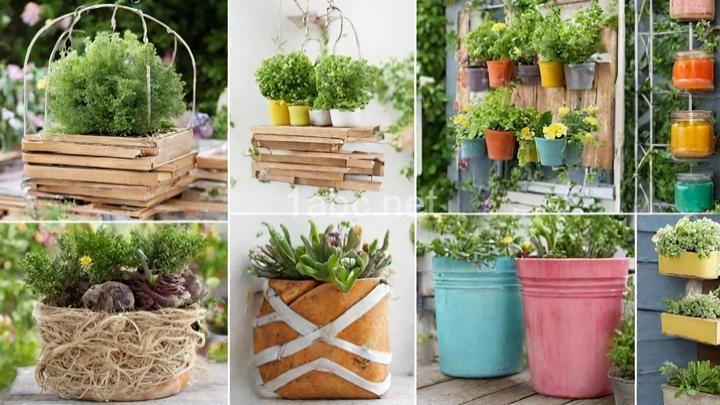Innovative Ways to Use Plants as Decorative Elements in Your Home
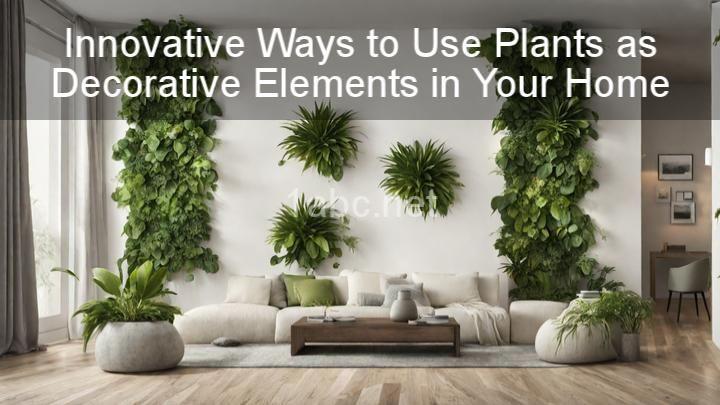
Introduction:
Welcome to our blog, where we will explore the wonderful world of plants and how they can transform your home into a green oasis. It's no secret that plants have become increasingly popular as decor elements in recent years. From small succulents to towering palm trees, plants have the power to breathe life into any space. In this article, we will delve into the benefits of incorporating plants into your home decor and explore innovative ways to use them as decorative elements.
I. Choosing the Right Plants:
Before diving into the world of plant decor, it's important to choose the right plants for your home. Not all plants thrive indoors, so it's essential to select varieties that are suitable for indoor environments. Some popular indoor plants include pothos, snake plants, peace lilies, and spider plants. These plants are not only aesthetically pleasing but also relatively easy to care for, making them perfect for beginners or busy individuals.
When selecting plants, consider factors such as lighting and maintenance needs. Different plants have different light requirements, so it's important to match them with the lighting conditions in your home. For example, low-light plants like ZZ plants are ideal for rooms with minimal natural light, while sun-loving plants like succulents thrive in bright, direct sunlight. Additionally, consider your ability to provide the necessary care and maintenance. If you have a busy lifestyle or tend to forget about watering, opt for low-maintenance plants that can tolerate some neglect.
II. Creating Striking Plant Displays:
Once you've chosen the perfect plants for your home, it's time to get creative and arrange them in visually appealing displays. There are countless ways to showcase your plants, so let's explore a few innovative ideas.
Hanging planters are a great way to add greenery to any room while saving valuable floor space. Consider using macrame hangers for a bohemian touch or geometric hanging planters for a modern look. Wall-mounted shelves or decorative stands are also excellent options for displaying plants. Arrange your plants in groups, mixing different sizes, colors, and textures to create a dynamic and eye-catching display.
III. Incorporating Plants into Different Rooms:
Plants can be incorporated into every room of your home, adding beauty and a touch of nature to each space. Let's explore how you can incorporate plants into different rooms, starting with the living room.
A. Living Room:
The living room is often the heart of the home, and incorporating plants can make it even more inviting. Consider using large statement plants, such as fiddle-leaf figs or monstera deliciosas, as focal points in your living room. These plants not only add a touch of drama but also improve air quality by filtering toxins. Pair these plants with existing furniture and decor to create a harmonious and cohesive look.
B. Bedroom:
Create a tranquil and relaxing atmosphere in your bedroom by incorporating plants known for their calming properties. Lavender, jasmine, and snake plants are excellent choices. These plants not only promote better sleep but also purify the air, creating a healthier environment. Place plants on bedside tables, windowsills, or hanging planters to add a touch of nature to your personal sanctuary.
C. Kitchen:
The kitchen is not only a place for cooking but also a space for creativity. Incorporating herbs or small potted fruits/vegetables as functional decor can enhance both the aesthetic and functionality of your kitchen. Imagine plucking fresh basil or mint leaves to add a burst of flavor to your dishes. Choose kitchen-friendly plants that thrive in humidity, such as herbs, cherry tomatoes, or dwarf citrus trees.
D. Bathroom:
Transform your bathroom into a spa-like oasis with the addition of plants that thrive in high-humidity environments. Ferns, orchids, and peace lilies are excellent choices. Consider space-saving ideas like hanging planters or wall-mounted pots to maximize the limited space in your bathroom. These plants not only add beauty but also help to purify the air and create a more relaxing atmosphere.
IV. DIY Plant Projects:
For those who love to get their hands dirty, there are plenty of DIY plant projects that allow you to personalize your plant displays. Creating terrariums is a popular DIY project that lets you create miniature landscapes within glass containers. You can also try your hand at macrame plant hangers, which add a boho-chic vibe to any room. There are endless possibilities for creativity, so let your imagination run wild and create unique plant displays that reflect your personal style.
V. Caring for Indoor Plants:
Caring for indoor plants is essential to ensure their longevity and beauty. Here are some practical tips to help you maintain healthy plants:
- Watering: Different plants have different watering needs, so it's important to research the specific requirements of each plant. As a general rule, allow the top inch of soil to dry out before watering again. Avoid overwatering, as it can lead to root rot and other issues.
- Fertilizing: Indoor plants typically require less fertilizer than outdoor plants. Use a balanced, water-soluble fertilizer once a month during the growing season to provide essential nutrients.
- Sunlight: Most indoor plants thrive in bright, indirect sunlight. Place your plants near windows where they can receive filtered light throughout the day. Avoid placing them in direct sunlight, as it can scorch the leaves.
- Pests: Keep an eye out for common pests like aphids, mealybugs, and spider mites. Regularly inspect your plants and treat any infestations promptly to prevent further damage.
For more detailed information on plant care, there are numerous resources available online and in books specifically dedicated to indoor gardening. Take the time to educate yourself and become a plant care expert.
Conclusion:
Incorporating plants into your home decor is not only visually appealing but also beneficial for your overall well-being. Plants add a touch of nature, improve air quality, and create a sense of calm and tranquility. By choosing the right plants, creating striking displays, and incorporating them into different rooms, you can transform your home into a green oasis. Embrace your creativity and explore the endless possibilities of plant decor. We hope this article has inspired you to bring the beauty of plants into your home. Thank you for reading, and we invite you to share your own experiences and plant decor ideas in the comments below. Happy gardening!
FREQUENTLY ASKED QUESTIONS
What is Innovative Ways to Use Plants as Decorative Elements in Your Home?
Plants can be used in various innovative ways to enhance the aesthetic appeal of your home decor. Here are a few ideas:
- Hanging plants: Install decorative hooks or ropes to create a unique hanging plant display. This not only adds visual interest but also saves valuable floor space.
- Vertical gardens: Create a living wall by arranging plants vertically on a trellis or using specialized wall-mounted planters. This is an excellent way to bring greenery indoors while making a bold statement.
- Terrariums: Build miniature ecosystems within glass containers by combining different types of plants, moss, rocks, and other decorative elements. Terrariums add a touch of whimsy and can be placed on shelves, tables, or even hung.
- Plant partitions: Use tall plants or create plant walls to divide large spaces. This creates a natural and visually appealing separation while keeping the area open and airy.
- Air plants: These low-maintenance plants don't require soil and can be attached to various surfaces like driftwood, seashells, or mounted on decorative holders. Air plants add a unique and modern touch to any room.
- Table centerpieces: Arrange small potted plants of varying heights and colors to create a stunning centerpiece for your dining or coffee table. This adds a refreshing touch to your living space.
- Repurposed containers: Get creative by using unconventional containers like teapots, mason jars, old tin cans, or even vintage suitcases as planters. This adds a quirky and personalized touch to your decor.
Remember, while incorporating plants into your home decor, it's important to consider their lighting and watering needs to ensure they thrive in their new environment.
How can I incorporate plants as decorative elements in my home?
Incorporating plants as decorative elements in your home can add beauty, freshness, and a touch of nature to your living space. Here are some ways you can do it:
- Choose the right plants: Select indoor plants that are well-suited for your home's lighting conditions and are easy to care for. Some popular options include pothos, snake plants, spider plants, and peace lilies.
- Create a focal point: Place a larger plant, like a floor plant or a tall palm, in a corner to create a stunning focal point in the room. This can help add height and visual interest.
- Use hanging plants: Hang small potted plants in macrame hangers or decorative planters from the ceiling or wall hooks to add a unique and whimsical touch to your home decor.
- Group plants together: Create clusters of plants in various sizes and shapes to create a visually appealing display. This can be done on a shelf, a windowsill, or even on a plant stand.
- Bring plants to unexpected places: Incorporate plants into unexpected areas such as the bathroom, kitchen countertop, or bookshelf. This can add a refreshing natural element to these spaces.
- Display plants in decorative containers: Choose stylish pots, planters, or baskets that complement your interior decor style. This can enhance the visual appeal of the plants while also tying them into the overall design scheme.
- Experiment with different arrangements: Have fun arranging your plants in creative ways. Mix and match different types of plants, vary their heights, and combine different textures to create an interesting visual composition.
- Utilize wall space: Install vertical planters or wall-mounted plant hangers to make use of vertical space. This not only adds a unique element to your decor but also saves floor space.
Remember to consider the specific care needs of each plant and ensure they receive adequate light, water, and maintenance. With a little creativity, you can transform your home into a green oasis that brings joy and tranquility.
What are some unique and creative ways to use plants as decor?
There are several unique and creative ways to use plants as decor. Here are a few ideas:
- Hanging planters: Instead of placing plants on tables or shelves, hang them from the ceiling using stylish planters. This adds a visually interesting element to your space.
- Wall-mounted gardens: Create a living wall by mounting small potted plants onto a vertical surface. This not only provides a striking focal point, but also maximizes space in smaller areas.
- Terrariums: Build your own miniature ecosystem by assembling a variety of plants, moss, and decorative elements in a glass container. Terrariums make for captivating and low-maintenance decor pieces.
- Plant partitions: Use tall and leafy plants to create natural partitions or screens in your home or office. This not only adds privacy but also brings an organic touch to the space.
- Plant shelves: Install floating shelves or wall-mounted shelves specifically designed for holding plants. These can be placed at different heights to create a visually dynamic display.
- Botanical frames: Press flowers or leaves and display them in frames as unique and nature-inspired artwork. This is a great way to preserve the beauty of plants for a longer time.
- Plant chandeliers: Create a stunning centerpiece by hanging plants from a chandelier or light fixture. This unconventional approach adds a touch of whimsy and brings nature indoors.
- Moss walls: Install moss panels on your walls to create a lush and textured backdrop. Moss walls not only provide an attractive visual element but also act as natural air purifiers.
- Plant-themed bookends: Use potted plants as bookends on your shelves. This combines functionality with aesthetics, making your book collection even more appealing.
- Plant sculptures: Prune and shape plants into creative and unique forms such as topiary animals or abstract shapes. These botanical sculptures become living works of art in your space.
Remember, the possibilities with plant decor are endless. Use your imagination and experiment with different combinations to enjoy the beauty and benefits of nature indoors.
Are there any specific plants that work best as decorative elements?
Yes, there are several plants that work well as decorative elements. Some popular choices include:
- Fiddle Leaf Fig: With its large, glossy green leaves, the Fiddle Leaf Fig is a popular choice for adding a touch of elegance to any space.
- Snake Plant: Also known as Mother-in-law's Tongue, the Snake Plant has long, upright leaves that add a sculptural element to any room.
- Pothos: Pothos plants are known for their trailing vines and heart-shaped leaves, making them perfect for hanging baskets or placing on a shelf.
- Peace Lily: The Peace Lily is a classic choice for its elegant white flowers and deep green foliage, making it a great addition to any room.
- Succulents: Succulents come in a variety of shapes, sizes, and colors, and their unique textures and low-maintenance nature make them ideal for adding interest to any space.
These are just a few examples, but there are many other plants that can serve as decorative elements depending on your personal style and preferences.
